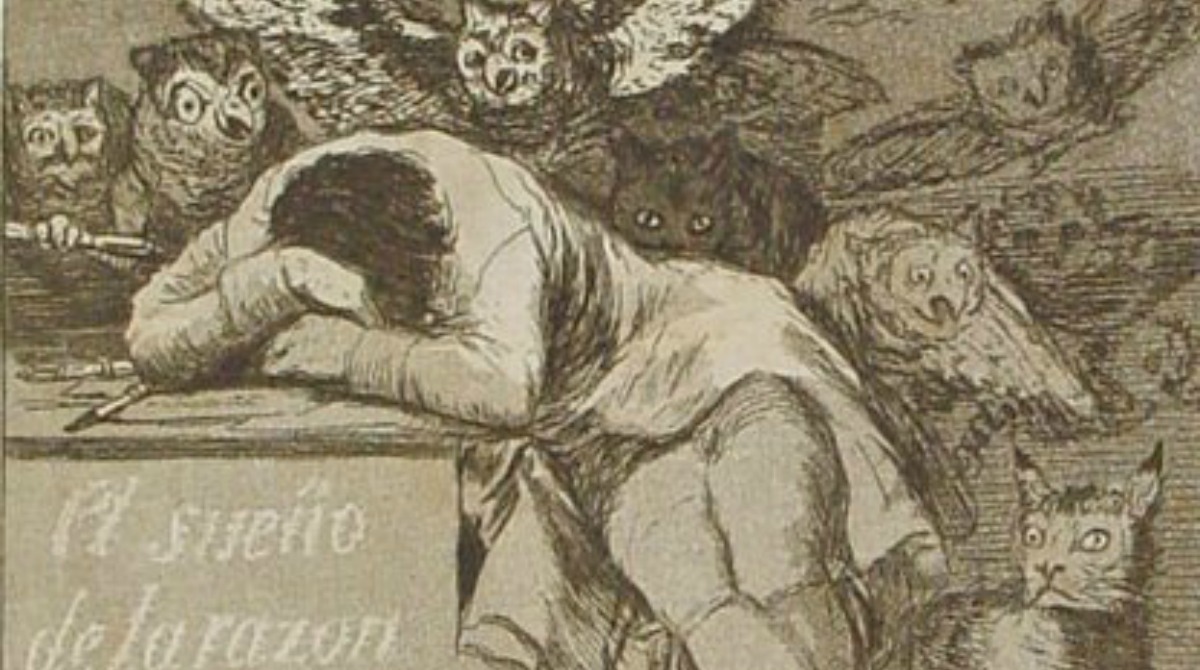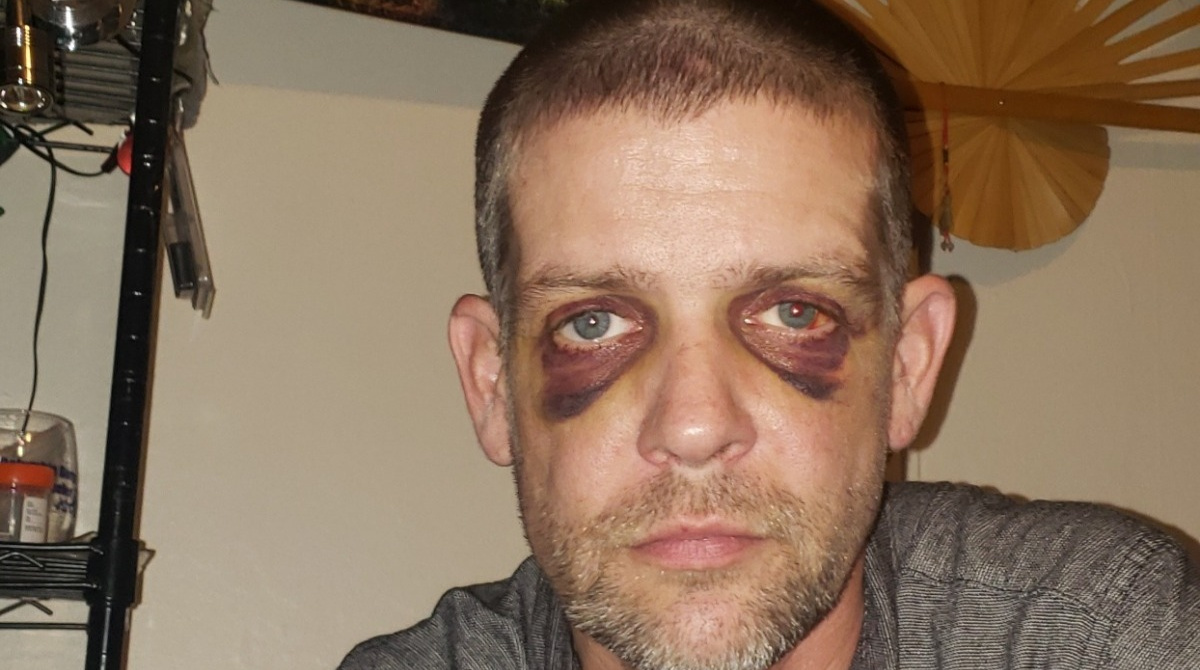“I need to check your thinking” said the English police officer
At long last, an English court has struck a blow against the cultural tyranny of thought-crime and in support of freedom of speech, reason and sanity.
In the High Court this morning, Mr Justice Julian Knowles ruled that the police had been disproportionate in the action they took against Harry Miller, a former police officer and a shareholder in a plant and machinery company in Lincolnshire, when they recorded as a “non crime hate incident” a series of disobliging comments he had tweeted about transgender issues.
It’s worth reading the judgment in full here, not just for the judge’s full-throated defence of freedom of expression, nor his often sardonic turns of phrase, but to understand the jaw-dropping and terrifying state of authoritarian imbecility to which our once-robust culture has descended.
Miller, described as intelligent and highly educated with a number of degrees, tweeted a series of comments, some of which were satirical and profane, about transgender issues and definitions.
These came to the attention of one Mrs B, who described herself as a “post-operative transgender lady” and who took offence. Accordingly, she reported Miller to Humberside police, describing him as a “bigot” who “eighty years ago … would have been making the same comments about Jewish people” (a remark described by the judge as “at the outer margins of rationality”) or in different times about gay, black or Asian people.
The judge found that Mrs B’s characterisation of what Miller had tweeted was not accurate. Nevertheless, Humberside police recorded what he had done as a “non-crime hate incident”. Despite the fact that at no stage did they hold that Miller had committed any crime, they created a document called a “Crime Report Print”, and referred to Mrs B throughout as “the victim” and Miller as “the suspect”.
They stated that Miller’s comments were “designed to cause deep offence and show his hatred for the transgender community” – a claim for which, says the judge, there was no evidence.
A police officer, PC Gul, visited Miller’s place of work. Upon finding him out, he left his card with a company director and asked for Miller to call him. In a subsequent phone call, Gul told Miller his tweets had upset “members of the transgender community” – although there was no evidence of anyone other than Mrs B being upset – and that a lyric about silicone breasts that Miller had tweeted had come closest to being a crime. According to Miller, this exchange then followed:
“I informed PC Gul that I was not the author of the verse and that it was simply expressing in verse the sense of imbalance of power between the sexes in the context of transgenderism. He said by Liking and Retweeting it on Twitter, I was promoting Hate. I again asked for, and received, confirmation that neither the verse, nor any of the other alleged 30 tweets, were criminal. I then asked PC Gul why he was wasting my time. PC Gul said ‘I need to check your thinking’. I replied: ‘So, let me get this straight, I’ve committed no crime. You’re a police officer. And you need to check my thinking ?’ PC Gul answered: ‘Yes’. I said, ‘Have you any idea what that makes you ? ‘Nineteen Eighty-Four’ is a dystopian novel, not a police training manual.’”
Miller went on:
“PC Gul explained that, on the basis of the third party complaint, a Hate Incident Record would be generated, regardless of there being no crime nor any evidence of hate. He warned me that continuing to tweet Gender critical content could count as an escalation from non crime to crime, thus prompting further police intervention.”
Got that? A non-crime can morph into a crime simply by virtue of the non-crime being committed on multiple occasions. But then came this:
“… Finally, PC Gul offered his final words of advice, words that I will never forget as I was so stunned by them. He said, ‘You have to understand, sometimes in the womb, a female brain gets confused and pushes out the wrong body parts, and that is what transgender is. I replied, ‘You’ve got to be kidding me. Wrong body parts ? You have to know that is absolute bullshit. Is this really the official police line ?’ PC Gul said, ‘Yes, I have been on a course.’”
Weep for Britain, eh.
In his ruling, the judge said this:
“There was not a shred of evidence that the Claimant was at risk of committing a criminal offence. The effect of the police turning up at his place of work because of his political opinions must not be underestimated. To do so would be to undervalue a cardinal democratic freedom. In this country we have never had a Cheka, a Gestapo or a Stasi. We have never lived in an Orwellian society.
“…Warning the Claimant that in unspecified circumstances he might find himself being prosecuted for exercising his right to freedom of expression on Twitter had the capacity to impede and deter him from expressing himself on transgender issues. In other words, the police’s actions, taken as a whole, had a chilling effect on his right to freedom of expression.
“… No reasonable person could have regarded [the tweets] as grossly offensive, and certainly not having regard to the context in which they were sent, namely, as part of a debate on a matter of current controversy. Nor could they be reasonably regarded as indecent or menacing… Nor was there any evidence that the Claimant intended to be grossly offensive: he regarded himself as simply using sarcasm and satire as part of the gender recognition debate in tweets to his Twitter followers.
“… For the reasons I have given there was no rational basis on which PC Gul could have believed that there was any risk of the Claimant committing a criminal offence. There was accordingly no need for him to visit the Claimant’s workplace and then warn him about the danger of being prosecuted if he escalated”.
The judge said he doubted whether it was proper to record these tweets as a non-crime hate incident at all. It was only Mrs B who thought they “demonstrated hostility or prejudice to the transgender community”, and he questioned “whether that conclusion was a rational one in relation to at least some of them”.
“…Whilst I am prepared to accept Mrs B’s indignation, I question whether Mrs B fell into [1.2.4] as someone who was responding to an internet story or who was reporting for a political motive, making the recording of her complaint not appropriate. The Crime Report shows she herself was not above making derogatory comments online about people she disagrees with on transgender issues; in other words, Mrs B is an active participant in the trans debate online”.
The effect of all this on Miller has been profound. The judge observed:
“… he experienced a deep sense of personal humiliation, shame and embarrassment on both his own behalf and for his family and employees, on learning about the recording of a hate incident in relation to his tweets. He says that as a consequence of the police’s actions, he has withdrawn from all involvement with his 21 company and has not returned to the office since the day he was first contacted by PC Gul. He says that he and his family have been the subject of threats and intimidation from a number of individuals, which caused the Claimant and his wife briefly to leave the family home. Nevertheless, after much deliberation and against the wishes of his wife, the Claimant has decided to continue tweeting about transgender issues. Indeed, he did so fairly promptly after speaking with PC Gul”.
This judgment is a long overdue blow for freedom against the hateful hate-crime orthodoxy. Nevertheless, the ruling also upholds the legality of the Hate Crime Operational Guidance produced by the Association of Chief Police officers, in accordance with which the Humberside police took their action against Harry Miller. And as the judge observes, that guidance is the result of twenty to thirty years of police policy on “hate crime” and “non-crime hate incidents” following recommendations made by the 1999 Macpherson Report on the racist murder of Stephen Lawrence in April 1993. The judge says:
“Many of the key features in contemporary hate incident policy (as set out in the HCOG) originate from the recommendations in the Macpherson Report, including perception-based recording, ie, that the basis for determining whether an incident was a ‘racist incident’ should be whether it was perceived as racist by the victim or another person (Recommendation 12) and encouragement of the reporting of non-criminal incidents as well as crimes (Recommendation 16)”.
It was the toxic and ideologically distorted Macpherson report which led to the introduction of the Orwellian concepts of hate crime, the replacement of objective reality by subjective “victim” opinion and the policing of thought itself. And until and unless the government openly repudiates this appalling legacy, Harry Miller will not be the last to feel this particular boot stamping on his face.




